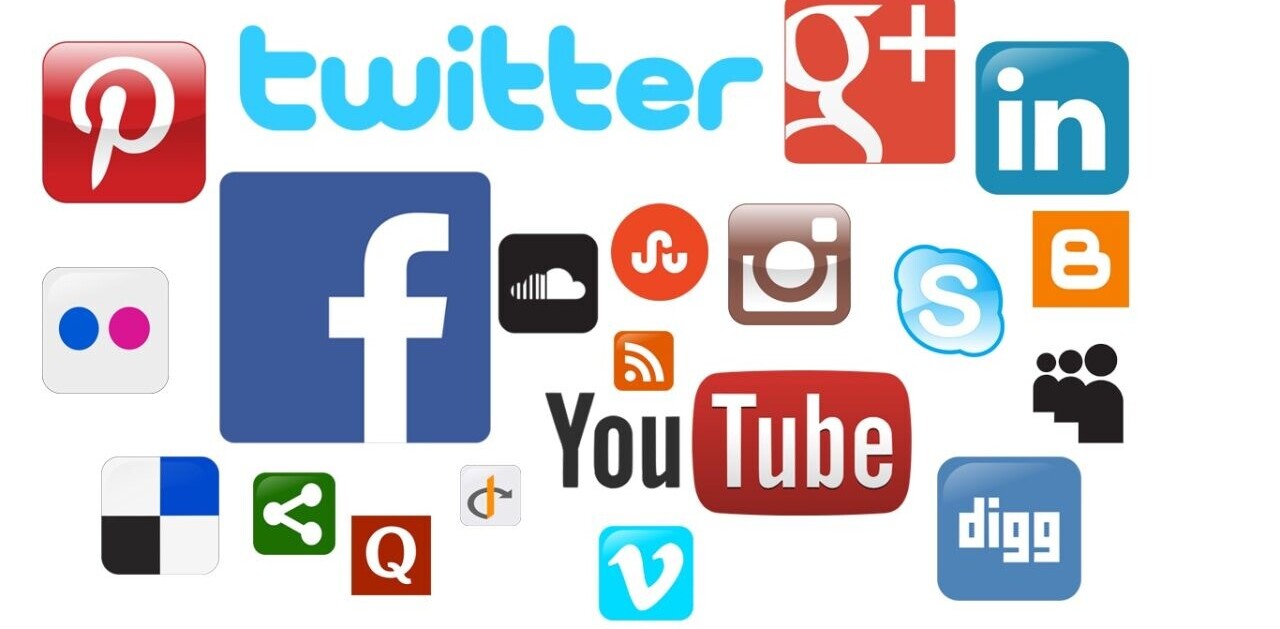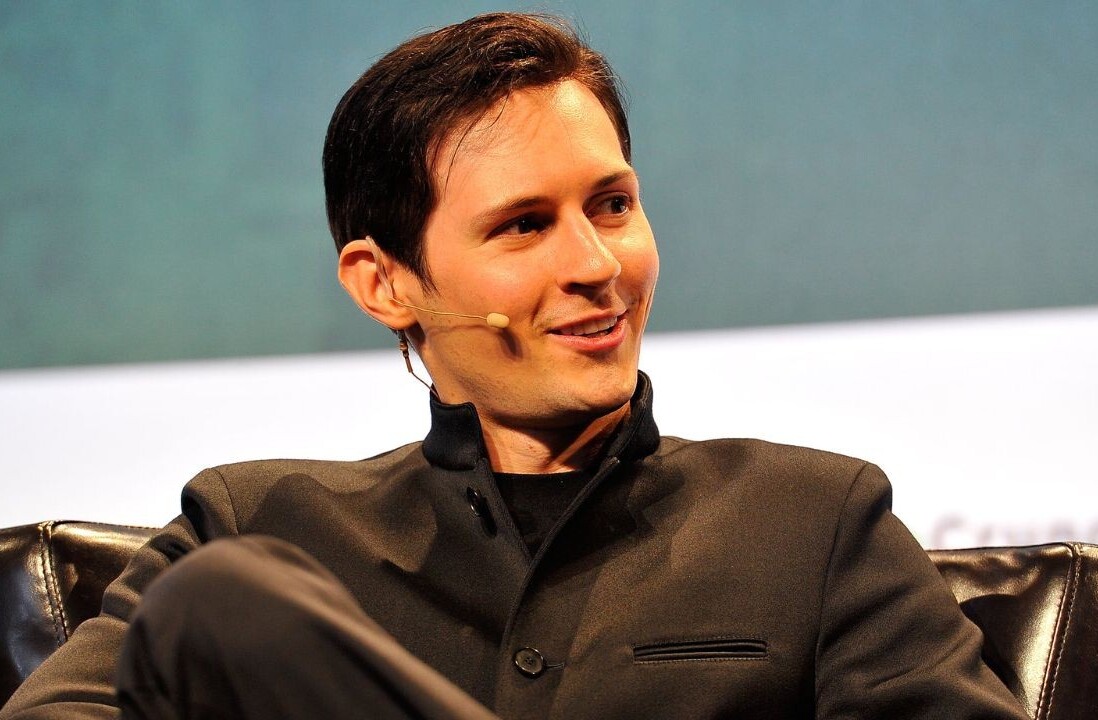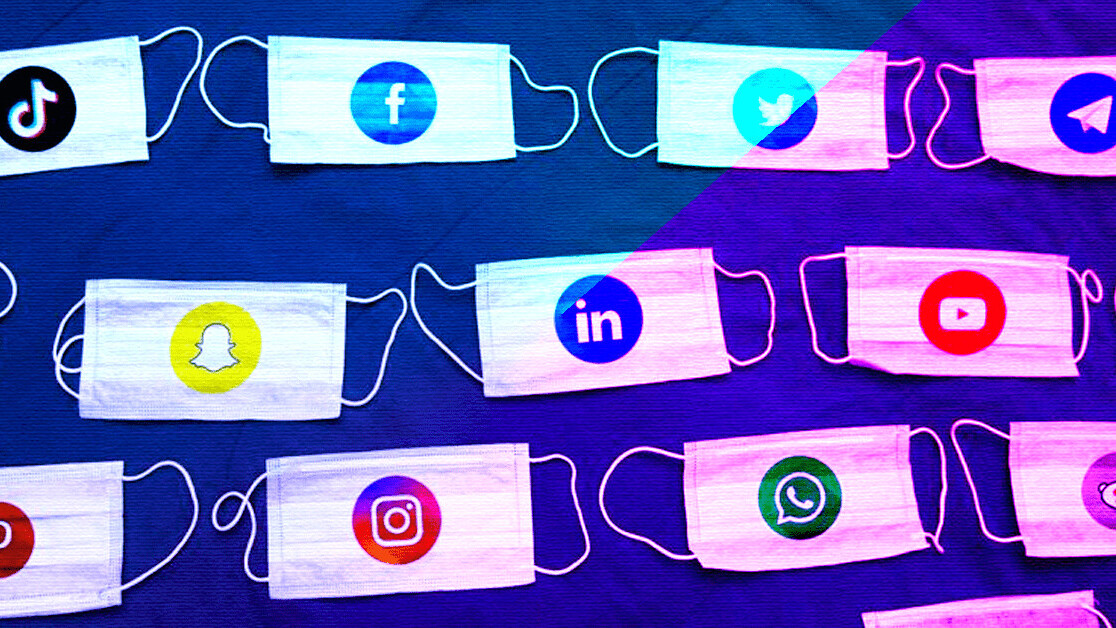
No one really wins when a pandemic hits, but 2020 has been huge for social media. Entire populations have been encouraged or required to stay at home, concerned about infection risks, and feeling the need for connection even more than usual due to heightened uncertainty and anxiety. As a result, the shift of living our social lives online instead of IRL has sustained an alarming acceleration period.
And I’m not just talking about the massive growth in engaged usership on TikTok and Instagram. LinkedIn, the B2B social network, has also shown a huge spike in both the amount of published content and the volume of engagement with that content, according to data compiled by Transmission.
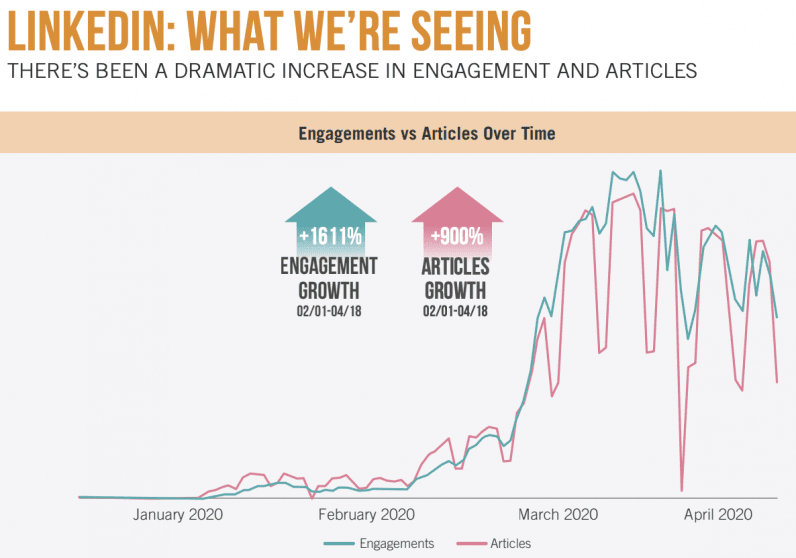
You can’t just unpause your social and expect the same kind of response that you enjoyed pre-pandemic. Here’s what to do instead.
Read the mood
People who are living in the shadow of the coronavirus, adjusting to working from home and deprived of regular social activities interact differently with social media than they did back in January. Initially, there was a massive spike in virus-related news and stories as people struggled to understand their new reality.
But the “infodemic” quickly tapered off, and people looked for ways to relieve serious anxieties and fears. Research by Taboola found that engagement with pandemic-related material peaked in March. By mid-April, the mood had already changed.
Engagement data from PathFactory’s user base since the beginning of the pandemic, on the other hand, shows that interest in COVID-19-related topics in the context of B2B content attention minutes has endured. It’s worth noticing here that the long tail is in content not directly related to the virus itself but rather in content related to how businesses should content with the new normal. Topics such as virtual events, cybersecurity and the need to adapt have commanded attention well into the summer.
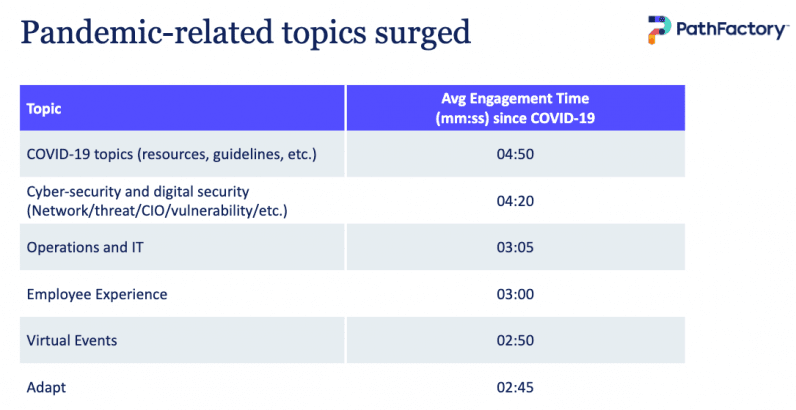
B2B marketers have to tread a fine line. You need to be sensitive to the pandemic and the toll it’s taking on your audience, but you can’t be seen to be milking it. Some humor is great, but only the right kind of humor. Oh yes, and CoronaCommFatigue is a real thing.
I like how ads have gone from “buy a toyota” to “this is a difficult and uncertain time for us all…buy a toyota”
— internet h*ppo (@InternetHippo) April 14, 2020
Although marketing might seem like a minefield today, it’s really not as tricky as it sounds. Just go back to the basics of what you’re doing. Understand your audience and deliver value. It’s just not the time for promotions, self-congratulation or aggressive hard-sells.
Create the content your audience craves to lighten the burden of lockdown, whether that’s diverting them with entertainment, building a creative online community, or helping people improve their emotional health. Save messaging meant for the bottom of the funnel for a later date, while you build brand equity by responding to the mood of the moment.
Mental health comes to the fore
Mental health has been coming out of the shadows and making an appearance in marketing for a while now, with marketing campaigns like Nike’s 2019 In My Feels, which raised funds for the American Foundation for Suicide Prevention, and a collaboration between Sweaty Betty and River Island with anti-bullying charity Ditch the Lie.
COVID-19 pushed this trend to greater prominence, with 40% of consumers aged 13 to 39 saying they appreciate brands addressing mental health during the pandemic.
The social media platform companies themselves are meeting the need, too. Snapchat launched a “Here for You” tool a week earlier than originally planned, together with extra resources to help people cope with the coronavirus. TikTok, meanwhile, promoted a #MentalHealthAwareness hashtag, scheduled live sessions with mental health experts, and invited people to share their states of mind.
Brands that are rising to the occasion are getting it right to a surprising degree. Jansport already has a large following of Gen Z and Millennials, so it’s made the most of that by stepping up to meet their mental and emotional needs through the hashtag #LightenTheLoad. Beginning in May, Jansport hosted weekly open conversations with mental health experts on Instagram Live.
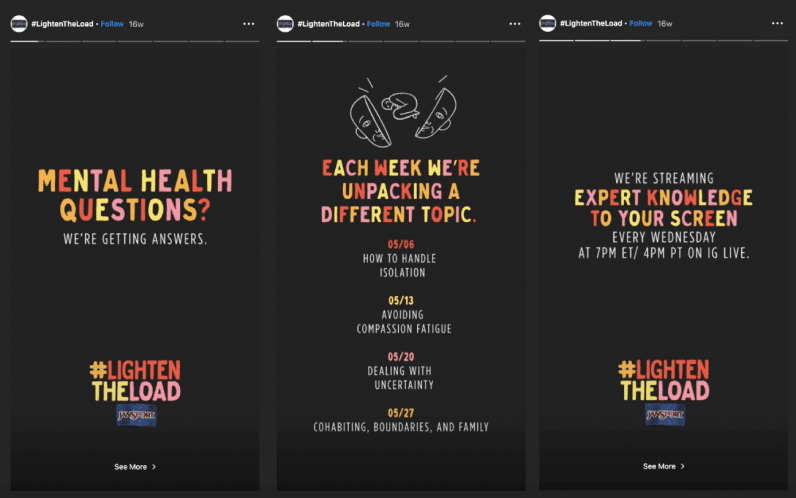
Build a community
Staying at home means isolation and loneliness for many people. Acknowledge it by finding ways to bring people together through your content.
Hashtag challenges on TikTok stimulate users to create and share content, making them part of a larger global community. A Lightricks survey found that over 70% of participants said that using a creativity app helped them overcome anxiety.
The company is arguably best known for its Facetune and Videoleap mobile apps for visual manipulation, but research that eventually informed its new Quickart product found that people are not only bent on creating content – a key part of the experience is about using it to connect with others. During the pandemic, the amount of creators using Lightricks apps shared 90% more visuals than they had prior.

B2B networking and professional development has taken place both on social media and in “meat space” for decades now, but in 2020, it’s virtual-only. But smart B2B brands are finding ways to ensure that going virtual actually enhances the conference experience, while also scaling up on the conversational community aspects of their social media presences. The TrustRadius study shows that Q&A sessions and other interactive elements are among the top draws attracting people to virtual events during the COVID-19 crisis.
The Content Marketing Institute, for example, has been promoting its newly online-only #CMIWorld conference with a themed series of pre-conference webinars, Slack community discussions and Twitter chats, and the engagement has been impressive.
50% of content created in the last 12 months is top of the funnel. @DeeRansom3 explains that leaves a huge gap/content need down funnel. How can we address this? We need to move at the speed of digital.#webinar #CMWorld pic.twitter.com/WxKhimXiyy
— Content Marketing Institute (@CMIContent) August 13, 2020
Marketers today would do well to remember that sometimes community is about more than serving the interests of a brand. When the pandemic first hit and layoffs were starting to snowball, Michael King, a B2B marketing influencer and founder of iPullRank, wrote this tweet as a way to help the wider marketing talent ecosystem.
If you’re a digital freelancer or open to freelance and you lost your gig recently, please add yourself to this spreadsheet so agencies and others can find you:https://t.co/kd3wE07Hex
Please RT!#COVIDー19
— MyCool King (@iPullRank) March 17, 2020
The posts and the resource he promoted in them went on to blow up. The spreadsheet now has around 1,000 rows, a testament to the power of trade professionals helping one another.
There’s still room for light and fun
Social content doesn’t have to be heavy to help users deal with big issues. Boredom is a real burden and one that younger workers have found especially hard to bear. Some 50% of Gen Z respondents to one recent poll said they feel bored and want to see more entertaining ad content.
You don’t have to leave it all to TikTok to raise the mood, either. B2B marketers can and should allow some lightness into their feed. Instagram is becoming increasingly popular for B2B marketing, and the very nature of the platform lends itself to a more playful approach.

Social media marketing is still effective during a pandemic
The coronavirus changed every area of our lives, so it’s not surprising that it also changed the way we use social media. Brands can and should still use social media marketing to keep their company top of mind, rather than going dark, but marketers need to pay attention to the new expectations of social media audiences.
Content that delivers value by addressing mental health issues, building a community, or entertaining your audience will add to your brand reputation and serve you well in the long term, even if sales need to take a back seat for the time being.
So you’re interested in marketing? Then join our online event, TNW2020, to explore the latest brand marketing tech, trends, and challenges.
Get the TNW newsletter
Get the most important tech news in your inbox each week.

